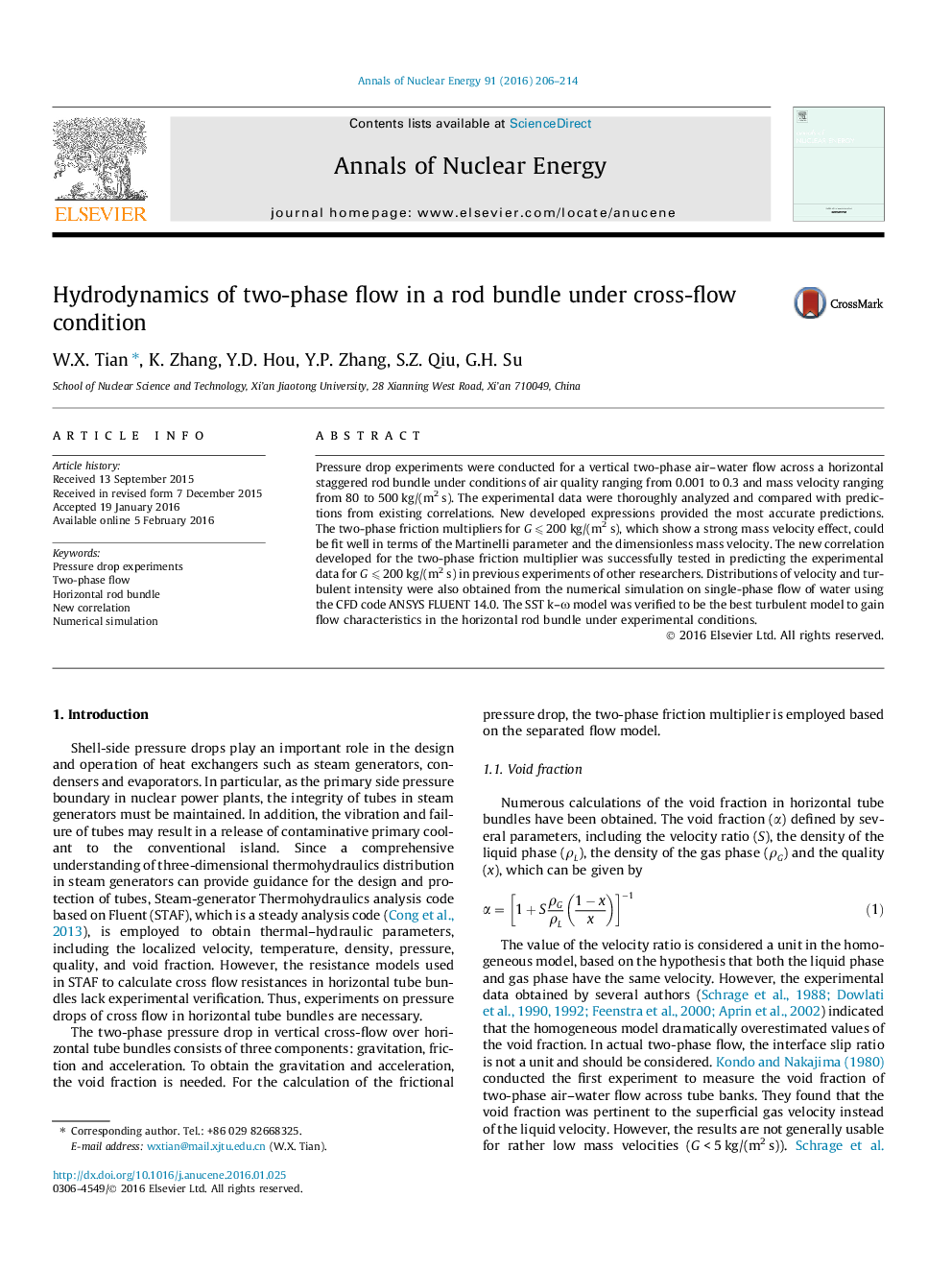| Article ID | Journal | Published Year | Pages | File Type |
|---|---|---|---|---|
| 1727998 | Annals of Nuclear Energy | 2016 | 9 Pages |
•New correlations were developed to obtain two-phase pressure drops in a horizontal rod bundle.•The best turbulent model to simulate flow resistance in horizontal rod bundles was discussed.•Velocity and turbulence intensity distributions among flow and rods were analyzed.
Pressure drop experiments were conducted for a vertical two-phase air–water flow across a horizontal staggered rod bundle under conditions of air quality ranging from 0.001 to 0.3 and mass velocity ranging from 80 to 500 kg/(m2 s). The experimental data were thoroughly analyzed and compared with predictions from existing correlations. New developed expressions provided the most accurate predictions. The two-phase friction multipliers for G ⩽ 200 kg/(m2 s), which show a strong mass velocity effect, could be fit well in terms of the Martinelli parameter and the dimensionless mass velocity. The new correlation developed for the two-phase friction multiplier was successfully tested in predicting the experimental data for G ⩽ 200 kg/(m2 s) in previous experiments of other researchers. Distributions of velocity and turbulent intensity were also obtained from the numerical simulation on single-phase flow of water using the CFD code ANSYS FLUENT 14.0. The SST k–ω model was verified to be the best turbulent model to gain flow characteristics in the horizontal rod bundle under experimental conditions.
